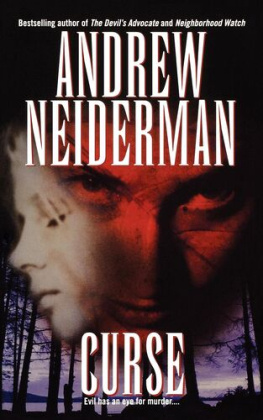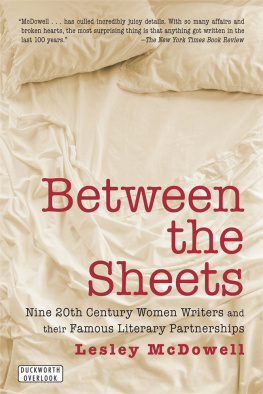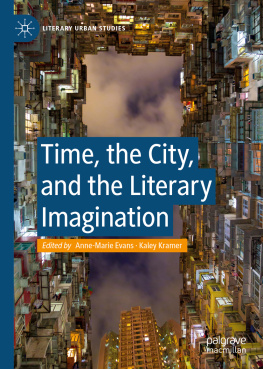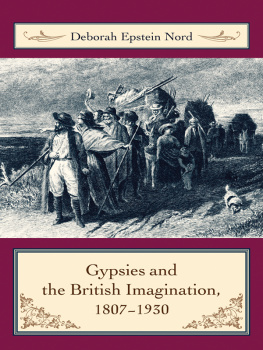Praise for the first edition of
THE MADWOMAN IN THE ATTIC: The Woman Writer and the Nineteenth-Century Literary Imagination
The authors have an encyclopedic command of literature and a particularly generous respect for their colleagues (and some precursors) in feminist criticism. Their summa is deeply scholarly, but it is also elegant and vigorous. I came to it expecting to be stunned by learning; I read it in a state of sustained excitement because it offered a new way of seeing.
Frances Taliaferro, Harpers
Its unlikely that anyone reading this massive, brilliantly argued and radically reinterpretive study of Jane Austen, Mary Shelley, Emily and Charlotte Bront, George Eliot and Emily Dickinson (among others) will ever see these writers quite as they did before.Publishers Weekly
Thanks to Gilbert and Gubar, we return to the writing of these nineteenth-century women with renewed curiosity, with intimations of a discernible female imagination. Valerie Miner, Christian Science Monitor
Having (the book) at hand is like having a good friend nearby. She is enormously well read, sharp, visionary in what she sees when she reads a book. You love to talk with her. You thank her for what she shows you; you always come back to her; count on her insights; and you like her enormously. Louise Bernikow, M5.
[Gilbert and Gubar] have an important subject to explore. They are equipped with a scholarly knowledge of the period, including its obscure cornersFrankenstein, Aurora Leigh, Maria Edgeworth, Jane Austens juveniliaand they ingeniously bring in myth and fairy tale to support their arguments. Indeed they do open up a new dimension in these works, and one will always see them differently.Rosemary Dinnage, New York Review of Books
The Madwoman in the Attic
The Madwoman in the Attic
THE WOMAN WRITER AND THE
NINETEENTH-CENTURY
LITERARY IMAGINATION
SECOND EDITION
SANDRA M. GILBERT
and SUSAN GUBAR

First published as a Yale Nota Bene book in 2000.
Copyright 1979 by Yale University.
Copyright 1984 by Sandra M. Gilbert and Susan Gubar.
Introduction to Second Edition copyright 2000 by Sandra M. Gilbert and Susan Gubar.
All rights reserved.
This book may not be reproduced, in whole or in part, in any form (beyond that copying permitted by Sections 107 and 108 of the U.S. Copyright Law and except by reviewers for the public press), without written permission from the publishers.
For information about this and other Yale University Press publications, please contact:
U. S. office | sales.press@yale.edu |
Europe office | sales@yaleup.co.uk |
Printed in the United States of America.
Library of Congress Cataloging-in-Publication Data
Gilbert, Sandra M.
The madwoman in the attic: the woman writer and the nineteenth-century literary imagination / Sandra M. Gilbert and Susan Gubar.2nd. ed.
p. cm.
Includes bibliographical references and index.
ISBN 0-300-0845&-7
1. English literatureWomen authorsHistory and criticism. 2. English literature 19th centuryHistory and criticism. 3. Women in literature. 4. Women authors Psychology. 5. English literaturePsychological aspects. I. Gubar, Susan, 1944- II. Title.
PR115.G5 2000
820.9928709034dc21
99-086038
A catalogue record for this book is available from the British Library.
Acknowledgment is made to the following for permission to reprint portions of this book, originally published in slightly different form: Feminist Studies, for The Genesis of Hunger, according to Shirley (by Susan Gubar) and Horrors Twin: Mary Shelleys Monstrous Eve (by Sandra Gilbert). / Novel, for Sane Jane and the Critics (by Susan Gubar) and A Revisionary Company (by Sandra Gilbert and Susan Gubar). / PMLA, for Patriarchal Poetry and Women Readers: Reflections on Miltons Bogey (by Sandra Gilbert). / Signs, for Plain Janes Progress (by Sandra Gilbert) and The Female Monster in Augustan Satire (by Susan Gubar). / The Cornell Review, for portions of Liber Scriptus: The Metaphor of Literary Paternity (by Sandra Gilbert). / Indiana University Press, for portions of Introduction: Gender, Creativity, and the Woman Poet (by Sandra Gilbert and Susan Gubar), in Gilbert and Gubar, ed., Shakespeares Sisters: Feminist Essays on Women Poets (Indiana University Press, 1979).
Acknowledgment is made for permission to quote from the following: Thomas H. Johnson, ed. The Poems of Emily Dickinson. Cambridge, Mass.: The Belknap Press of Harvard University Press. Copyright 1951, 1955 by the President and Fellows of Harvard College. By permission of the publishers and the Trustees of Amherst College. / Thomas H.Johnson, ed. The Complete Poems of Emily Dickinson. Boston, Mass.: Little, Brown and Company. Copyright 1914, 1935, 1942 by Martha Dickinson Bianchi. Copyright 1929, 1957, 1963 by Mary L. Hampson. By permission of the publishers. / Ruth Stone. Cheap. Copyright 1975 by Ruth Stone. By permission of Harcourt Brace Jovanovich, Inc.
10 9 8 7 6 5 4
This book is as much for Edward, Elliot, and Roger, as it is for Kathy, Molly, Sandra, Simone, Susan, and Susanna.
The strife of thought, accusing and excusing, began afresh, and gathered fierceness. The soul of Lilith lay naked to the torture of pure interpenetrating inward light. She began to moan, and sigh deep sighs, then murmur as if holding colloquy with a dividual self: her queendom was no longer whole; it was divided against itself. At length she began what seemed a tale about herself, in a language so strange, and in forms so shadowy, that I could but here and there understand a little.
George MacDonald, Lilith
It was not at first clear to me exactly what I was, except that I was someone who was being made to do certain things by someone else who was really the same person as myselfI have always called her Lilith. And yet the acts were mine, not Liliths.
Laura Riding, Eves Side of It
Contents
Preface to the First Edition
This book began with a course in literature by women that we taught together at Indiana University in the fall of 1974. Reading the writing of women from Jane Austen and Charlotte Bront to Emily Dickinson, Virginia Woolf, and Sylvia Plath, we were surprised by the coherence of theme and imagery that we encountered in the works of writers who were often geographically, historically, and psychologically distant from each other. Indeed, even when we studied womens achievements in radically different genres, we found what began to seem a distinctively female literary tradition, a tradition that had been approached and appreciated by many women readers and writers but which no one had yet defined in its entirety. Images of enclosure and escape, fantasies in which maddened doubles functioned as asocial surrogates for docile selves, metaphors of physical discomfort manifested in frozen landscapes and fiery interiorssuch patterns recurred throughout this tradition, along with obsessive depictions of diseases like anorexia, agoraphobia, and claustrophobia.
Seeking to understand the anxieties out of which this tradition must have grown, we undertook a close study of the literature produced by women in the nineteenth century, for that seemed to us to be the first era in which female authorship was no longer in some sense anomalous. As we explored this literature, however, we found ourselves over and over again confronting two separate but related matters: first, the social position in which nineteenth-century women writers found themselves and, second, the reading that they themselves did. Both in life and in art, we saw, the artists we studied were literally and figuratively confined. Enclosed in the architecture of an overwhelmingly male-dominated society, these literary women were also, inevitably, trapped in the specifically literary constructs of what Gertrude Stein was to call patriarchal poetry. For not only did a nineteenth-century woman writer have to inhabit ancestral mansions (or cottages) owned and built by men, she was also constricted and restricted by the Palaces of Art and Houses of Fiction male writers authored. We decided, therefore, that the striking coherence we noticed in literature by women could be explained by a common, female impulse to struggle free from social and literary confinement through strategic redefinitions of self, art, and society.
Next page





